Narayan Mandayam
Artificial General Intelligence (AGI)-Native Wireless Systems: A Journey Beyond 6G
Apr 29, 2024



Abstract:Building future wireless systems that support services like digital twins (DTs) is challenging to achieve through advances to conventional technologies like meta-surfaces. While artificial intelligence (AI)-native networks promise to overcome some limitations of wireless technologies, developments still rely on AI tools like neural networks. Such tools struggle to cope with the non-trivial challenges of the network environment and the growing demands of emerging use cases. In this paper, we revisit the concept of AI-native wireless systems, equipping them with the common sense necessary to transform them into artificial general intelligence (AGI)-native systems. These systems acquire common sense by exploiting different cognitive abilities such as perception, analogy, and reasoning, that enable them to generalize and deal with unforeseen scenarios. Towards developing the components of such a system, we start by showing how the perception module can be built through abstracting real-world elements into generalizable representations. These representations are then used to create a world model, founded on principles of causality and hyper-dimensional (HD) computing, that aligns with intuitive physics and enables analogical reasoning, that define common sense. Then, we explain how methods such as integrated information theory play a role in the proposed intent-driven and objective-driven planning methods that maneuver the AGI-native network to take actions. Next, we discuss how an AGI-native network can enable use cases related to human and autonomous agents: a) analogical reasoning for next-generation DTs, b) synchronized and resilient experiences for cognitive avatars, and c) brain-level metaverse experiences like holographic teleportation. Finally, we conclude with a set of recommendations to build AGI-native systems. Ultimately, we envision this paper as a roadmap for the beyond 6G era.
Stochastic Games for Smart Grid Energy Management with Prospect Prosumers
Aug 07, 2017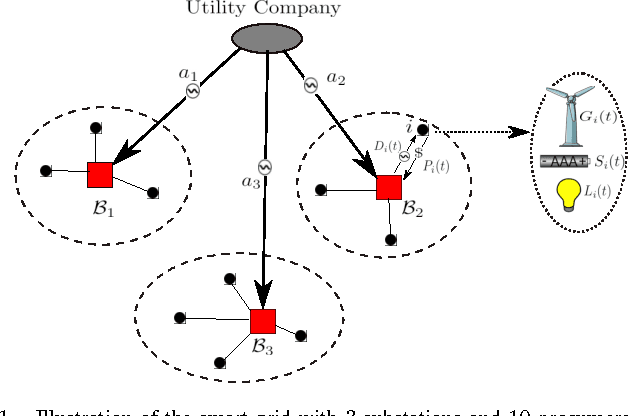
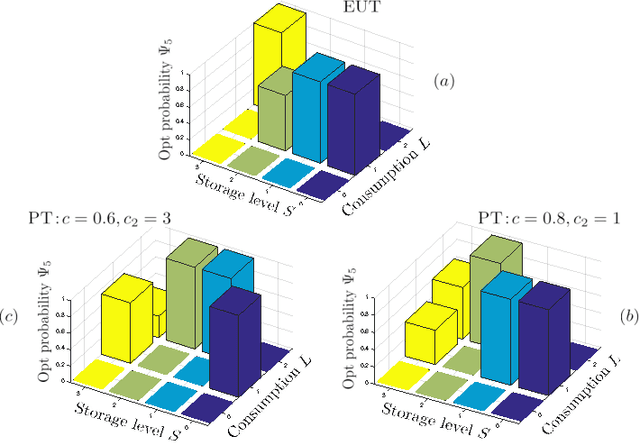
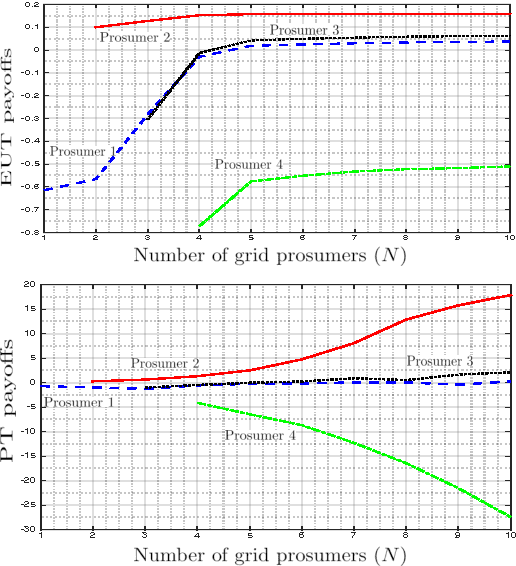

Abstract:In this paper, the problem of smart grid energy management under stochastic dynamics is investigated. In the considered model, at the demand side, it is assumed that customers can act as prosumers who own renewable energy sources and can both produce and consume energy. Due to the coupling between the prosumers' decisions and the stochastic nature of renewable energy, the interaction among prosumers is formulated as a stochastic game, in which each prosumer seeks to maximize its payoff, in terms of revenues, by controlling its energy consumption and demand. In particular, the subjective behavior of prosumers is explicitly reflected into their payoff functions using prospect theory, a powerful framework that allows modeling real-life human choices. For this prospect-based stochastic game, it is shown that there always exists a stationary Nash equilibrium where the prosumers' trading policies in the equilibrium are independent of the time and their histories of the play. Moreover, a novel distributed algorithm with no information sharing among prosumers is proposed and shown to converge to an $\epsilon$-Nash equilibrium. On the other hand, at the supply side, the interaction between the utility company and the prosumers is formulated as an online optimization problem in which the utility company's goal is to learn its optimal energy allocation rules. For this case, it is shown that such an optimization problem admits a no-regret algorithm meaning that regardless of the actual outcome of the game among the prosumers, the utility company can follow a strategy that mitigates its allocation costs as if it knew the entire demand market a priori. Simulation results show the convergence of the proposed algorithms to their predicted outcomes and present new insights resulting from prospect theory that contribute toward more efficient energy management in the smart grids.
Reading Between the Pixels: Photographic Steganography for Camera Display Messaging
Apr 06, 2016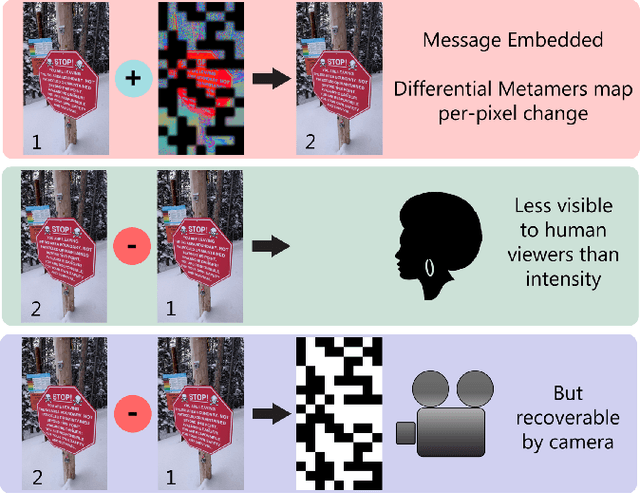
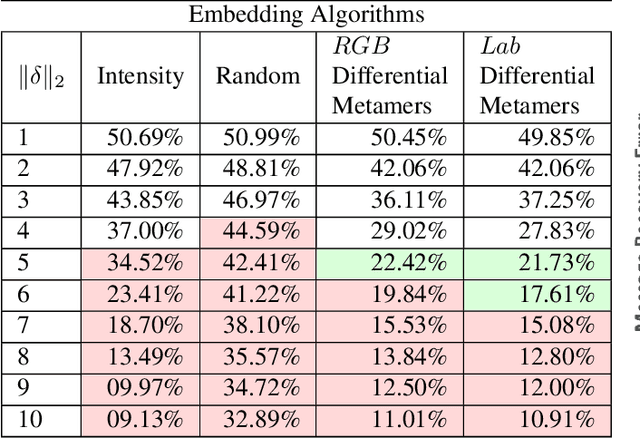
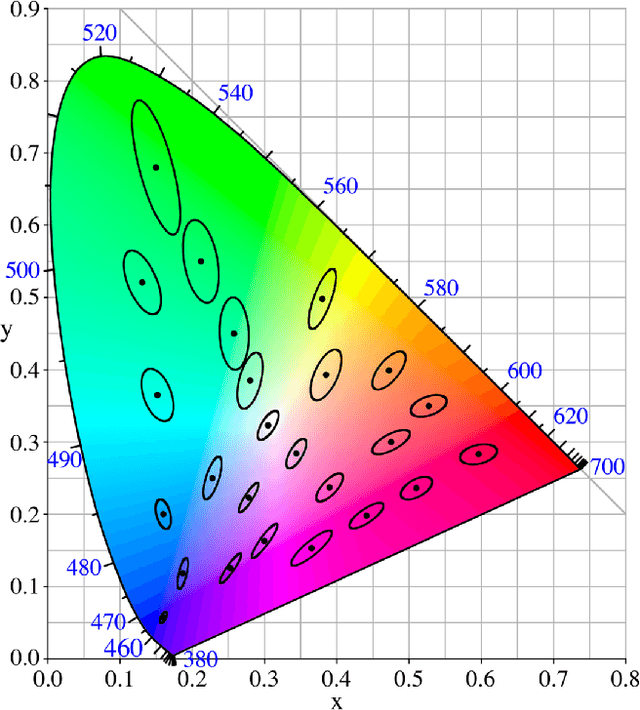
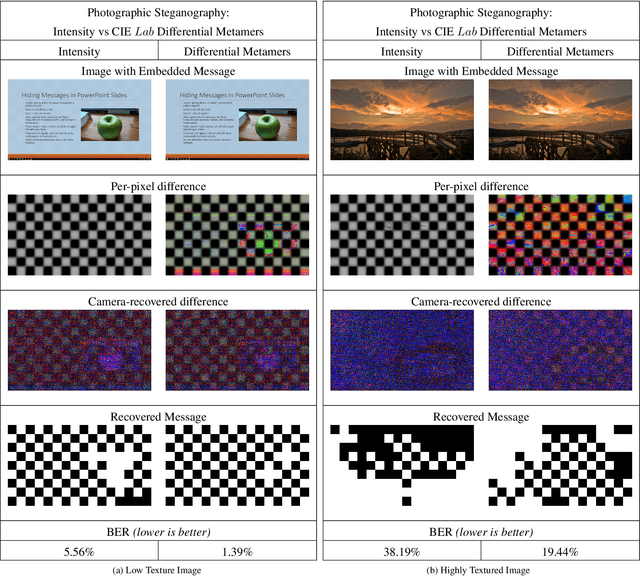
Abstract:We exploit human color metamers to send light-modulated messages less visible to the human eye, but recoverable by cameras. These messages are a key component to camera-display messaging, such as handheld smartphones capturing information from electronic signage. Each color pixel in the display image is modified by a particular color gradient vector. The challenge is to find the color gradient that maximizes camera response, while minimizing human response. The mismatch in human spectral and camera sensitivity curves creates an opportunity for hidden messaging. Our approach does not require knowledge of these sensitivity curves, instead we employ a data-driven method. We learn an ellipsoidal partitioning of the six-dimensional space of colors and color gradients. This partitioning creates metamer sets defined by the base color at the display pixel and the color gradient direction for message encoding. We sample from the resulting metamer sets to find color steps for each base color to embed a binary message into an arbitrary image with reduced visible artifacts. Unlike previous methods that rely on visually obtrusive intensity modulation, we embed with color so that the message is more hidden. Ordinary displays and cameras are used without the need for expensive LEDs or high speed devices. The primary contribution of this work is a framework to map the pixels in an arbitrary image to a metamer pair for steganographic photo messaging.
Optimal Radiometric Calibration for Camera-Display Communication
Jan 08, 2015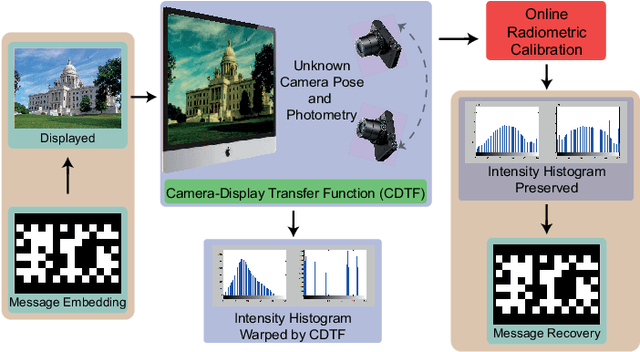
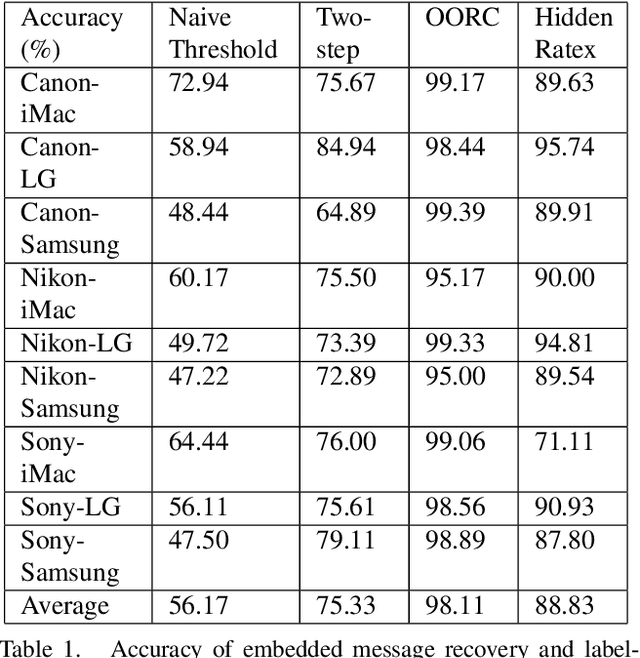

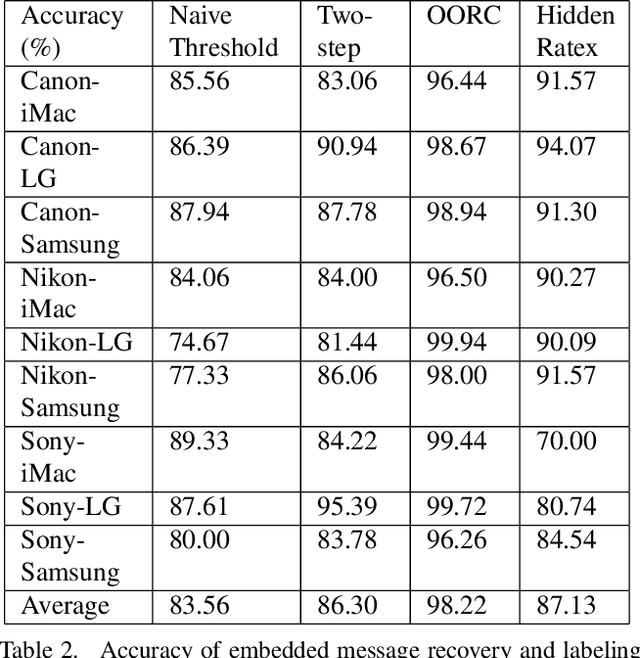
Abstract:We present a novel method for communicating between a camera and display by embedding and recovering hidden and dynamic information within a displayed image. A handheld camera pointed at the display can receive not only the display image, but also the underlying message. These active scenes are fundamentally different from traditional passive scenes like QR codes because image formation is based on display emittance, not surface reflectance. Detecting and decoding the message requires careful photometric modeling for computational message recovery. Unlike standard watermarking and steganography methods that lie outside the domain of computer vision, our message recovery algorithm uses illumination to optically communicate hidden messages in real world scenes. The key innovation of our approach is an algorithm that performs simultaneous radiometric calibration and message recovery in one convex optimization problem. By modeling the photometry of the system using a camera-display transfer function (CDTF), we derive a physics-based kernel function for support vector machine classification. We demonstrate that our method of optimal online radiometric calibration (OORC) leads to an efficient and robust algorithm for computational messaging between nine commercial cameras and displays.
 Add to Chrome
Add to Chrome Add to Firefox
Add to Firefox Add to Edge
Add to Edge